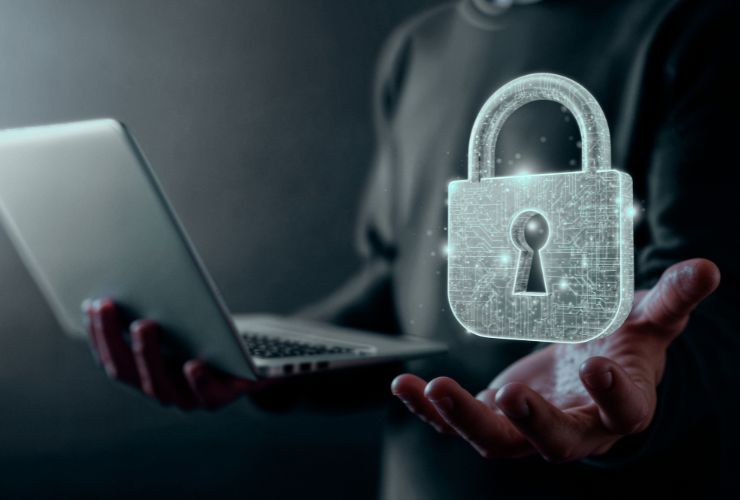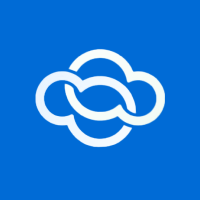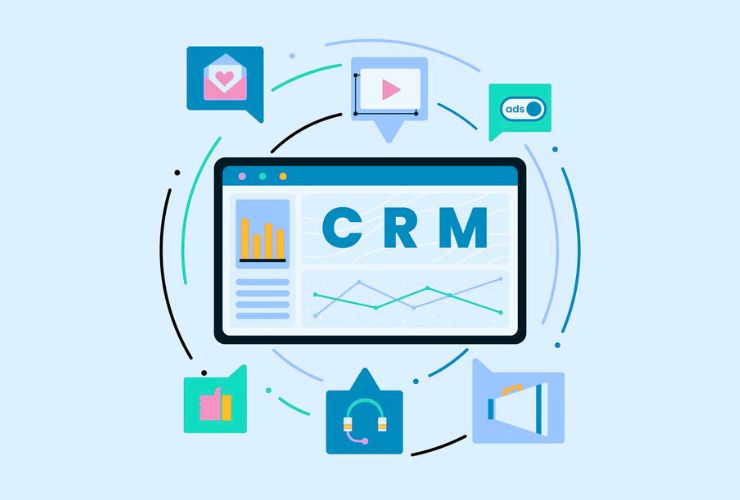Vtiger CRM is a robust tool for handling customer relationships, sales opportunities, and business processes. It centralizes and houses sensitive data such as customer contacts, financial documents, and transaction histories—all of which makes it a target for a cyberattack, unauthorized access, or a data breach.
Securing your Vtiger CRM is not merely about safeguarding your data; It’s about enhancing client trust, maintaining risk compliance, and protecting your company’s reputation. In this blogpost,
1. Utilize Role-Based Access Control
Utilizing role-based access control (RBAC) is essential to ensuring users have access only to the information they need to perform their duties.
Some practical tips include the following:
- Roles should be assigned carefully among different departments such as sales, marketing, support, and management.
- Limit access to sensitive modules, such as financial documents, contracts, or personal information related to customers.
- Have regular audits for user permissions to disable access when an employee is no longer active or has departed.
- Establish hierarchical access privileges, such that a manager can approve a change, while a standard user cannot change critical data.
Example: A sales representative can modify lead status, but cannot view confidential pricing documents that are reserved for management.
2. Enforce Robust Password Policies
Passwords are the primary barrier to unauthorized access. Weak passwords account for one of the most common ways security is compromised.
Good practices include:
- Require a minimum length and complexity (uppercase, lowercase, numbers, symbols).
- Require users to change passwords every 60-90 days.
- Prevent users from reusing passwords and sharing passwords among employees.
- Utilize password managers for secure credential storage.
3. Implement Two-Factor Authentication (2FA)
Two-factor authentication adds an extra layer of security. Even if a password is compromised, 2FA still provides protection against unauthorized log in.
Additional practices to put in place:
- Use authenticator apps (Google Authenticator, Microsoft Authenticator) and/or SMS verification.
- Require 2FA for administrators and for users with access to sensitive data.
- Monitor failed log in attempts, and lock accounts after so many failed attempts.
Example – A hacker may successfully guess a password to credentials, but the hacker cannot get into the CRM without a second factor.
4. Encrypt Data in Transit
Your Vtiger CRM must protect any data transmitted to users, and you want to be sure that you are not exposing sensitive customer data to hackers. Use SSL/TLS encryption to ensure hackers cannot intercept messages during transit from the CRM to the user.
Additional practices to employ:
- Enable HTTPS on your Vtiger CRM instance.
- Use a VPN when accessing CRM data remotely.
- Verify that APIs connected to your CRM are also accessing the data securely.
5. Implement Regular Backups and Planning for Disaster Recovery
Data loss can happen as a result of human error, hardware failure, or hacking. You can mitigate these risks by implementing regular automated backups on your CRM.
Steps to take:
- Make daily or weekly backups of your CRM database, depending on the frequency of data entry and updates made to the system.
- You should also periodically test both your backup and recovery practices to ensure that they are working as described.
- Store backups in a secure location and consider storing backups offsite or using a cloud storage solution.
Tip: You might want to consider implementing a versioned backup system if you want to recover deleted records after an accidental deletion or in the event your records have been affected by a ransomware attack.
6. Keep Vtiger CRM and Extensions Up-to-Date
Software updates are often released in response to vulnerabilities that hackers will look to exploit.
Best Practices
- When possible, you should apply updates for the Vtiger CRM core, plugins, and extensions as soon as updates are available.
- You will also want to discontinue backing any unsupported modules or outdated third-party extensions.
- You should also monitor the Vtiger release notes for any security updates or improvements to your CRM.
For instance, software updates to a workflow module may prevent attackers from exploiting vulnerabilities previously used to access your CRM.
7. Monitor User Activity and Audit Logs
Regular monitoring will help you identify suspicious activity early and to take action to reduce the likelihood of a data breach occurring.
Best Practices
- Enable audit logs, which typically include record edits, configuration changes, and login attempts.
- Monitor for unusual activities such as mass record deletes or unusual access points.
- Review audit logs on a weekly basis to help identify trends or anomalies.
Tip: Look to combine audit logs and automated alerts to respond to incidents as they occur.
8. Educate and Train your Team
Even with the most robust security measures, they will fail if employees are not proactively aware of phishing attacks or insecure methods.
Some training suggestions include the following:
- Regular outdoor security awareness sessions.
- Assuring employees fully understand different types of phishing emails and malicious links.
- Reinforcing good practices to handle sensitive customer data.
- Encouraging the immediate reporting and/or escalation to management of suspicious activity.
For example, if a member of the marketing team receives a fake login email, if they are put through training, they will be aware of entering their credentials.
9. Compliance and Data Protections
Many businesses will be required to be compliant with regulations such as GDPR, HIPAA, data protection laws depending on the location, etc.
Compliance measures may include:
- Implementing a data retention and deletion policy.
- Having consent management for customer communications.
- Ensuring sensitive fields (financial information, health information, etc.) are not visible.
- Documenting processes to show compliance during internal and external audits.
For example, automatically anonymizing, archiving, etc. data that exceeds retention campaigns so your team is compliant with GDPR.
10. Use Advanced Security Features
Vtiger CRM has many advanced features that can assist to heighten security including:
- IP restrictions where users can access the CRM.
- Session timeouts that would limit unauthorized access if a session is left idle.
- Field-level security (sensitive data within the module should not be accessible).
- Encryption (data at rest is not accessible).
Conclusion
Securing your Vtiger CRM is essential for protecting sensitive customer data, maintaining business credibility, and ensuring regulatory compliance. By implementing role-based access, strong passwords, two-factor authentication, encryption, regular backups, updates, monitoring, team training, and compliance measures, organizations can safeguard their CRM effectively.
A well-secured CRM not only protects data but also enhances business efficiency, customer trust, and operational confidence. Implement these strategies today to ensure your Vtiger CRM remains a safe and powerful tool for managing your customer relationships and business processes.










